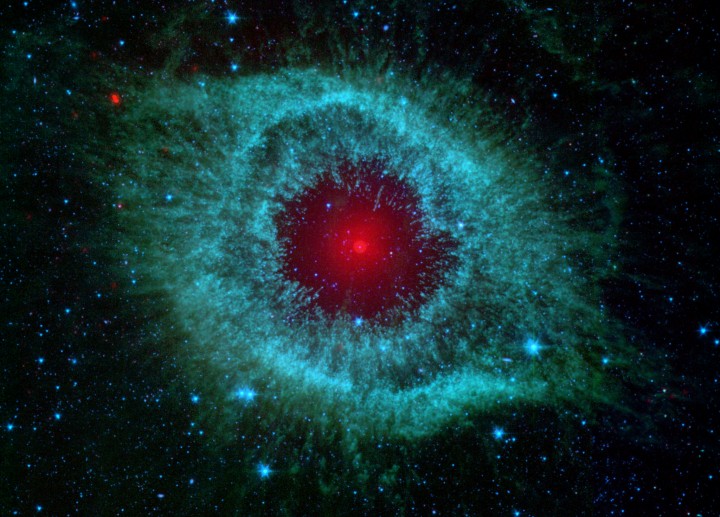APOD: 2009 December 31 - Dust and the Helix Nebula (original) (raw)
Astronomy Picture of the Day
Discover the cosmos!Each day a different image or photograph of our fascinating universe is featured, along with a brief explanation written by a professional astronomer.
Explanation: Dust makes this cosmic eye look red. The eerie Spitzer Space Telescope imageshows infraredradiation from the well-studiedHelix Nebula (NGC 7293) a mere 700 light-years away in the constellationAquarius. The two light-year diameter shroud of dust and gas around a central white dwarf has long been considered an excellent example of aplanetary nebula, representing the final stages in the evolution of a sun-like star. But the Spitzer data show the nebula's central star itself is immersed in a surprisingly bright infrared glow.Modelssuggest the glow is produced by a dust debris disk. Even though the nebular material was ejected from the star many thousands of years ago, the close-in dust could be generated by collisions in a reservoir of objects analogous to our own solar system'sKuiper Belt or cometaryOort cloud. Formed in the distant planetary system, the comet-like bodies would have otherwise survived even the dramatic late stages of the star'sevolution.
